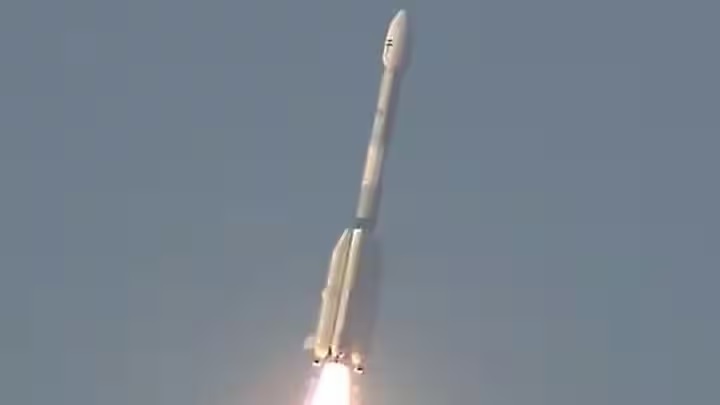ISRO's GSLV-F14 Successfully Launches INSAT-3DS Satellite for Crucial Earth Observation Mission

Space News ,India :- In its 16th overall mission and 10th flight using the indigenous super-cooled cryogenic engine, the GSLV-F14 successfully lifted off from the Satish Dhawan Space Centre, placing the INSAT-3DS satellite into a precise orbit.
Launched on the Geosynchronous Launch Vehicle (GSLV), the INSAT-3DS meteorological satellite embarked on its space journey on the evening of February 17, 2024. The mission, considered crucial by ISRO, was nicknamed "Naughty Boy" by former ISRO Chairman K Sivan.
The success of this mission holds paramount importance for the GSLV, which is set to carry the Earth observation satellite NISAR later this year. NISAR, a collaborative effort between NASA and ISRO, aims to map the entire globe in 12 days, providing spatially and temporally consistent data to understand changes in Earth's ecosystems, ice mass, sea level rise, and natural hazards like earthquakes and tsunamis.
Key Points about the INSAT-3DS Satellite Launch:
1. Purpose of the Satellite: INSAT-3DS will contribute to more accurate and informative weather forecasts by studying the surface of the ocean, enabling the provision of natural disaster warnings.
2. GSLV F14's 16th Mission: This mission marks the 16th space mission for the Geosynchronous Satellite Launch Vehicle (GSLV), aiming to deploy the INSAT-3DS satellite into the Geosynchronous Transfer Orbit (GTO).
3. Funding: The GSLV F14's 16th mission has been entirely funded by the Ministry of Earth Sciences, representing a significant step forward in India's space advancements.
4. Success Rate: Termed "Naughty Boy" by the former ISRO Chairman due to its historical challenges, GSLV-F14 has faced problems in 6 out of its total 15 space missions, resulting in a 40% failure rate. The successful launch of this mission holds great significance for ISRO's ongoing efforts.


